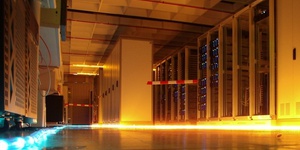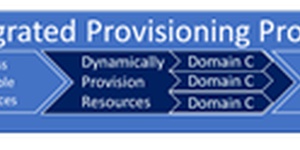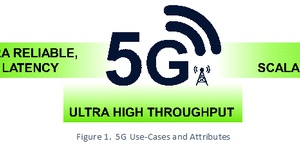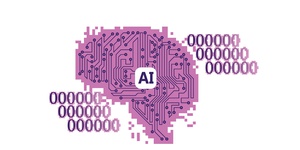
Whitepapers
BUSINESS CASE FOR BTI INTELLIGENT CLOUD CONNECT
Cloud computing, video streaming, and social media are contributing to a dramatic rise in metro and regional inter data center traffic that includes data center to data center, data center to access networks and local traffic, and data center to peering and partner traffic. Traffic patterns also are changing: data centers are moving closer to the end user or “eyeballs” and east-west traffic is flowing between all of these data center connections. Inter data center network architectures are being reconfigured to respond to the increased traffic volumes and changing traffic patterns. The architectural challenges include cost effectively accommodating the rapidly expanding traffic volumes, providing network flexibility, and supporting service innovation.
BTI Intelligent Cloud Connect is a converged optical, LSR and application-aware architecture that responds to these challenges. The converged platform provides 10 Gbps and 100 Gbps DWDM wavelengths, MPLS Label Switch Router (LSR), and a Network Function Virtualization-based (NFV) applications module. The LSR approach is optimized for cloud connectivity applications. It costs less than full-fledged Layer 3 routers by excluding unnecessary core route processing and look-up overhead not required for data center transit points. Costs are reduced further by delivering transparent transport DWDM wavelengths, Layer 2+ switching, and NFV applications all in a single platform with unified management and control.
ACG Research conducted a case study of a typical metro data center network to compare the five-year total cost of ownership of the BTI Intelligent Cloud Connect architecture with two alternative solutions: 1) LSR Composite: separate LSR, transparent optical transport, and network analytics platforms; 2) L3 Composite: separate L3 router, transparent optical transport, and network analytics platforms. BTI’s ICC architecture produces a lower cost solution than the LSR Composite and L3 Composite alternatives by eliminating the redundancies associated with the separate network elements of the alternative solutions. BTI’s proNX Management and Control Software reduces capital expense (CapEx) by eliminating costly control functionality located within each network element of the LSR Composite and Layer 3 router alternatives and decreases operation expense (OpEx) by simplifying and automating many operational processes.
Click here for more information about ACG Research's business case analysis service or contact sales@acgcc.com
You might like similar whitepapers


The Economic Benefits of Automating Capacity Optimization in IP Networks

Mitigating Market Challenges in Telecommunications

Maximizing Efficiency Using Standards-Based, Model-Driven Infrastructures in NFV Deployments

AUTONOMOUS NETWORKS: NOW IS THE TIME

Coriant Groove™ G30 Disaggregated Platform Update: Market Impact Report

Key CommSoft Learnings from #MWC19

Itential Vendor Profile: Automation and Orchestration for Multi-Domain Networks

Meet Market Needs with Software-Enabled Solutions

Coriant’s Multi-Sided Platform Partner Program: Market Impact Report

Lenovo: Data Center Switch Solutions for Enterprise Data Centers

MODERNIZING THE CABLE SERVICE DELIVERY INFRASTRUCTURE

THE BUSINESS CASE FOR ADAPTIVE IP

Huawei Autonomous Driving Network: Standards-Based but Differentiated

Segment Routing: An ACG Research Whitepaper

THE POWER OF DIFFERENTIATION: BUILDING BROADBAND FOR 2021 AND BEYOND

The TCO Benefits of Distributed Broadband Services with CUPS

The Evolution of Broadband Traffic: A Forecast for the Americas, EMEA, and APAC Regions

THE ECONOMIC BENEFITS OF IP TRANSPORT AT 400G

Building the Business Case for AI in Wireless Networks: Juniper Mist AI TCO Report

Using Open Virtual RANs in 5G

Hybrid Networks: Integrated Provisioning for Virtual and Physical Networks

INTRODUCING xHAUL REWRITING THE PLAYBOOK FOR TRANSPORT NETWORKING IN THE RAN IN 5G

Accelerating Revenue and Innovation in CSPs' Distributed Clouds

Orchestrating Dynamic Enterprise Services

Disruption Propelling Massive Changes in Video Market

Middle-Mile Networks Capacity Requirements for Fixed Broadband

The Economic Benefits of Distributed Broadband Services

Tunnel-Based versus Tunnel-Free SD-WAN

Global Pricing for SD-WAN

ECONOMIC BENEFITS OF THE VMWARE TELCO CLOUD AUTOMATION AND HORIZONTAL INFRASTRUCTURE

AUTOMATING 5G ACCESS DEPLOYMENTS

The Economic Benefits of a Super-Converged Multi-Access Edge Network

Nuage/ALU on the VNS Solution in an SP Context

Virtualization Journey: Cable Companies Are on Their Way

Building Open, Scalable Service Delivery Infrastructures

AUTONOMOUS NETWORKS POWER INDUSTRY 4.0

Simplifying IP Networks

Propelling Operators to L3 Operations Autonomy and Beyond with Huawei ADN

The Economic Benefits of the Ciena Virtualized Edge Solution

Next-Generation Cloud Metro Network Requirements and Architectures

Broadband Access Transformation

Achieving End-to-End Intelligence in the Cable Access Network

TCO Benefits of Converged 5G Ready IP Transport

The Right Container Platform(s) for Modern OSS and BSS

The TCO Benefits of Dell’s Next-Generation Telco Servers





